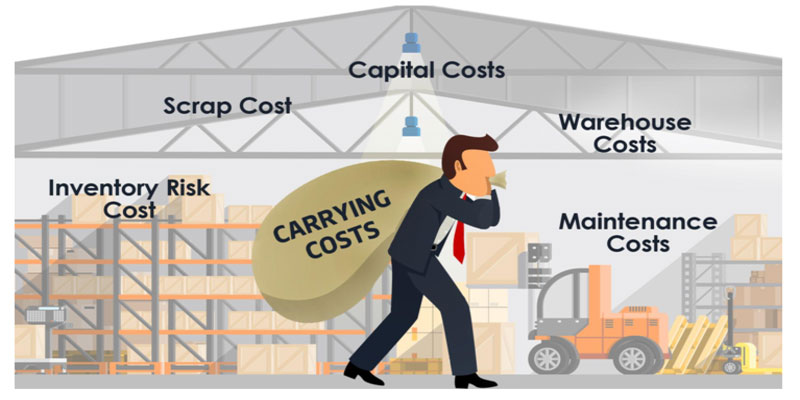Settling-In Allowance: What is it?
May 26, 2025 By Kelly Walker
Settling-in allowance is the money offered to a person who has moved to a new location for a new job. The allowance can either be given in a single payment to the employee or later compensated by the company on submission of relative receipts.
A settling-in allowance is used for relocation expenses, such as meals, temporary lodging, storage of personal goods, finding new schools, and other costs of settling up at the new location. However, these expenses can be considered taxable in some circumstances and incorporated on the employee's W2 form.
Overview of Settling-In Allowance
Companies assist employees who move for work to a different city or country, either because of a new job offer or transfer. Besides a settling-in allowance, they might pay a relocation allowance or repayment for relocation expenses. These expenses include accommodation, transportation costs, temporary lodging in a new location, meals for finding house trips, storage costs, and more.
Other covered expenses include costs related to the process of selling and getting a primary residence, like real estate commissions and closing costs. In case of a temporary relocation, a company may pay a living allowance, too, along with a settling-in allowance.
Expenses Covered by Settling-In Allowance
In addition to moving costs, there are other things that the relocation allowance should cover. For your convenience, we've curated a list of expenses that should be included in the settling-in allowance.
Moving Costs
The moving expenses include transporting household belongings to the new location. Also, it involves packing, unpacking, and shipping management. However, if arranged through an expert relocation partner, a lump sum is paid to cover all services. It should also include insurance costs to help avoid further unforeseen costs.
Accommodation Costs
In addition to covering housing costs, the package also covers one-off costs linked with selecting a new place to live. Besides, help with inspecting a home and signing a lease is also offered.
If accommodation isn't ready before the departure date, the allowance should cover temporary accommodation costs. These costs cover services like cleaning, telephone, heating, and broadband set-up.
Travel
Settling-in allowance may cover airfare for all family members. It will usually cover trips back home, mostly during holidays.
Storage
It isn't quite possible that expats will arrive with their goods. In such circumstances, temporary household items storage needs to be covered.
Orientation Trip
Some employees visit the new host location in advance to know the area and to check to accommodate options. These costs usually include hotels, meals, airfares, etc.
Home Sale and Lease Break Cost
Settling-in allowances may cover the expenses of arranging for a sale and rental of an employee's current property or the costs of ending a lease. Also, it may include cleaning costs and costs associated with the termination of services and subscriptions.
Documentation
Typically, the company arranges work permits, necessary visas, and other paperwork linked to the move. If not, any expenses arising from it should be provided in the allowance package.
Medical Costs
Medications, vaccinations, and other medical arrangements can be involved in negotiations.
Repatriation
The return trip back home should also be covered in the allowance package.
Lastly, ensure all the points mentioned earlier are included in the negotiations, so the company and an employee don't have to go through nasty surprises.
Settling-In Allowance and Taxes
Until 2018, a company could claim deductions for settling-in expenses as eligible moving costs. However, according to the tax law (TCJA) Tax Cuts and Jobs Act, passed by ex-president Donald Trump's administration in December 2017, employers cannot claim those decisions. They have to include all moving costs claimed by an employee as a part of their salaries.
As per the rule, employers can claim those deductions under the following two situations:
- An employer repays an employee in 2018 for eligible moving costs incurred before 2018.
- An employer reimburses a third party in the year 2018 for moving services offered to an employee before 2018.
Furthermore, there are some differences in the taxability of various relocation expenses. Let's take a look at these expenses and their tax status.
- Moving, Transportation, and Packing Costs:
Packing and moving costs are tax-free, either reimbursed by employees or paid for directly. In addition, car transportation expenses form a substantial part of a relocation grant. Gas prices and driver fees paid for transportation are also nontaxable because they're supposed to be personal effects of an employee.
- Brokerage Charges
If the company reimburses the money, the whole money is taxable as it'd be regarded as a part of the employee's obligations. On the other hand, temporary lodging in a new city or hotel for the foremost 15 days can be tax exempted.
It includes meals, lodging, boarding, or other living expenses that are included in the settling-in allowance or reimbursement. Lastly, any expenses after 15 days are taxable as the employee's salary part.
- School Admission Fees for Kids
The reimbursement of admission fees is regarded as a financial benefit for employees. Therefore, it's considered taxable, not tax-exempt. The amount you receive as reimbursement is included in your taxable income.
Most importantly, an employee will need to provide all payment vouchers, agreements, and receipts with the employer to claim tax benefits and other concessions for allowance.
Settling-In Allowance Example
An example of providing a settling-in allowance is when a company establishes a division or branch in a different state or country and offers relocation to current employees to have an experienced work team in the new place.
As part of the relocation inducement, the company will cover moving and travel costs and aid with selling a current property and buying a new one. However, the settling-in allowance will be offered in addition to these relocation incentives.

10 Best Small Personal Loan Options for 2020

Impact of Basel III rules on bank investment

What Is The Premium Tax Credit, Form 8962 Of The Internal Revenue Service?

How the Internet Changed Investing?

Ways to Make Walmart Credit Card Payment

What Is The Difference Between Interactive Brokers And Td Ameritrade?

Difference between 457 Plan and 403(b) Plan

What is a Car Depreciation

Bank Promotions for Opening Accounts

How Much Does Inventory Carrying Cost?

Municipal Bonds vs. Taxable Bonds and CDs: How Do They Compare?


